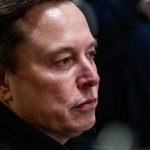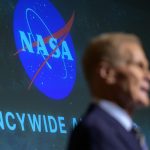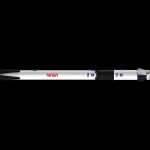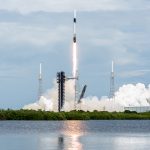
- Green Tech
- NASA
- Space Solar Energy
NASA and Air Force Accelerate Space Solar Power Development
5 minute read

Space solar power initiatives gain momentum as NASA and defense partnerships target 24/7 renewable energy generation from orbit
Key Takeaways
- NASA partnerships drive space solar innovation with Ascent Solar Technologies developing ultra-light CIGS panels under a 12-month agreement, while the US Air Force awards Northrop Grumman $100 million for 2025 SBSP demonstration
- Space-based solar could reduce Europe’s renewable dependency by 80% through continuous energy generation, with NASA’s heliostat technology projected to outperform wind and terrestrial solar by 2050
- Global competitors advance toward 2025-2040 milestones as Japan’s OHISAMA project prepares to beam 1 kW from orbit while launch costs target $200/kg, making commercial viability possible by 2040
Introduction
The global race for space-based solar power accelerates as governments and private companies pursue 24/7 renewable energy generation beyond Earth’s atmospheric constraints. NASA’s collaboration with industry partners positions the United States at the forefront of this emerging sector, though coordinated federal support remains fragmented across agencies.
Space solar promises uninterrupted energy supply regardless of weather conditions or daylight hours, attracting significant investment from Europe, China, and Japan. The technology addresses critical energy independence challenges while potentially transforming both aerospace and power generation industries.

Key Developments
NASA’s partnership with Ascent Solar Technologies represents a pivotal advancement in space-based solar power development. The 12-month agreement focuses on ultra-light, flexible CIGS solar panels designed for efficient power beaming from space to Earth or lunar installations.
The collaboration involves NASA’s Marshall and Glenn research centers, leveraging government expertise to accelerate private sector innovation. This partnership model demonstrates how federal agencies can de-risk early-stage commercialization while advancing critical technologies.
Meanwhile, the US Air Force has committed $100 million to Northrop Grumman for demonstrating space-based solar power capabilities by 2025. The project targets power supply solutions for remote military installations, addressing strategic energy security concerns.
Market Impact
Launch cost reductions drive commercial viability projections for space solar systems. SpaceX targets $200 per kilogram launch costs compared to current $1,000 per kilogram rates, fundamentally altering the economic equation for orbital power generation.
A King’s College London study projects that space-based solar could reduce Europe’s dependence on terrestrial wind and solar installations by 80 percent. This reduction stems from continuous energy generation capabilities that eliminate intermittency challenges facing ground-based renewable systems.
Investment flows increasingly support both government-backed research and private development initiatives. Philanthropic funding and military contracts sustain US involvement while international competitors advance their own demonstration projects.

Strategic Insights
NASA’s heliostat swarm technology offers the most promising economic advantages among current space solar approaches. Projections indicate this design could outperform both wind and terrestrial solar installations by 2050, delivering significant cost reductions and reduced battery storage requirements.
The technology roadmap includes NASA’s Mature Planar Array as a near-term stepping stone toward advanced solutions. This progression allows for incremental validation while building toward more sophisticated orbital power systems.
Global competition intensifies as Japan, China, the European Space Agency, and the United Kingdom fund demonstration projects targeting milestones between 2025 and 2040. Japan’s OHISAMA project plans to beam 1 kilowatt from a 180-kilogram satellite using microwave transmission technology.
Expert Opinions and Data
Research institutions like Caltech advance critical wireless power transmission technologies through projects such as MAPLE, which demonstrates orbital power beaming capabilities. These university-led initiatives lower technical barriers for commercial market entrants.
Industry analysis indicates the US risks falling behind international competitors due to insufficient coordinated federal support. Current administration priorities appear misaligned with the strategic importance of space solar development.
Technical assessments show that rapid advances in lightweight materials and power beaming efficiency accelerate commercial timeline projections. However, skeptics highlight environmental risks, regulatory challenges, and potential capital diversion from proven terrestrial renewable technologies.

Conclusion
Space-based solar power development reaches critical juncture as technical barriers diminish and international competition intensifies. NASA’s technological capabilities position the United States for leadership, though success requires coordinated federal strategy and sustained investment commitment.
The convergence of declining launch costs, advancing materials science, and increasing energy security concerns creates favorable conditions for space solar commercialization. Current developments establish the foundation for transformative changes in global energy infrastructure within the next two decades.








